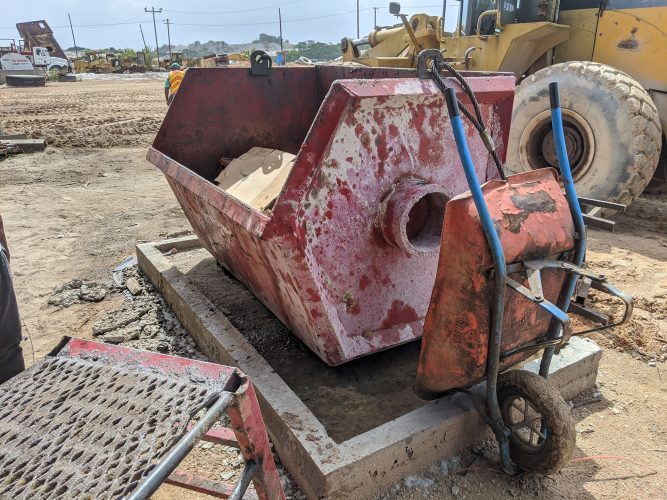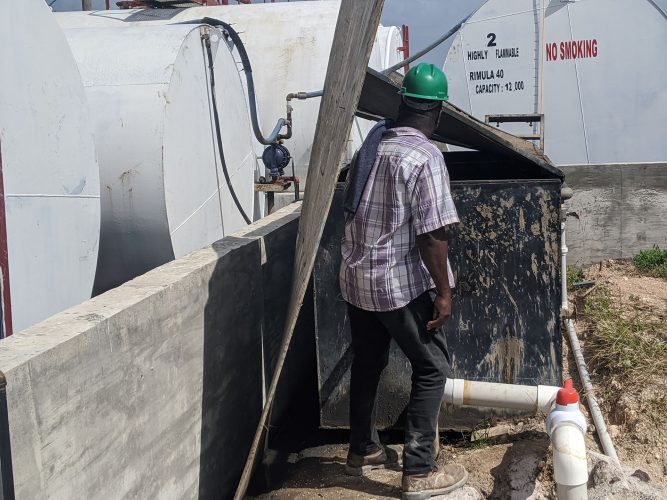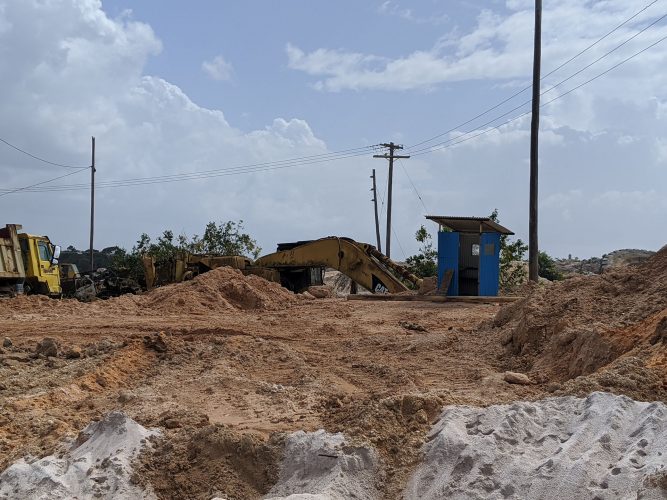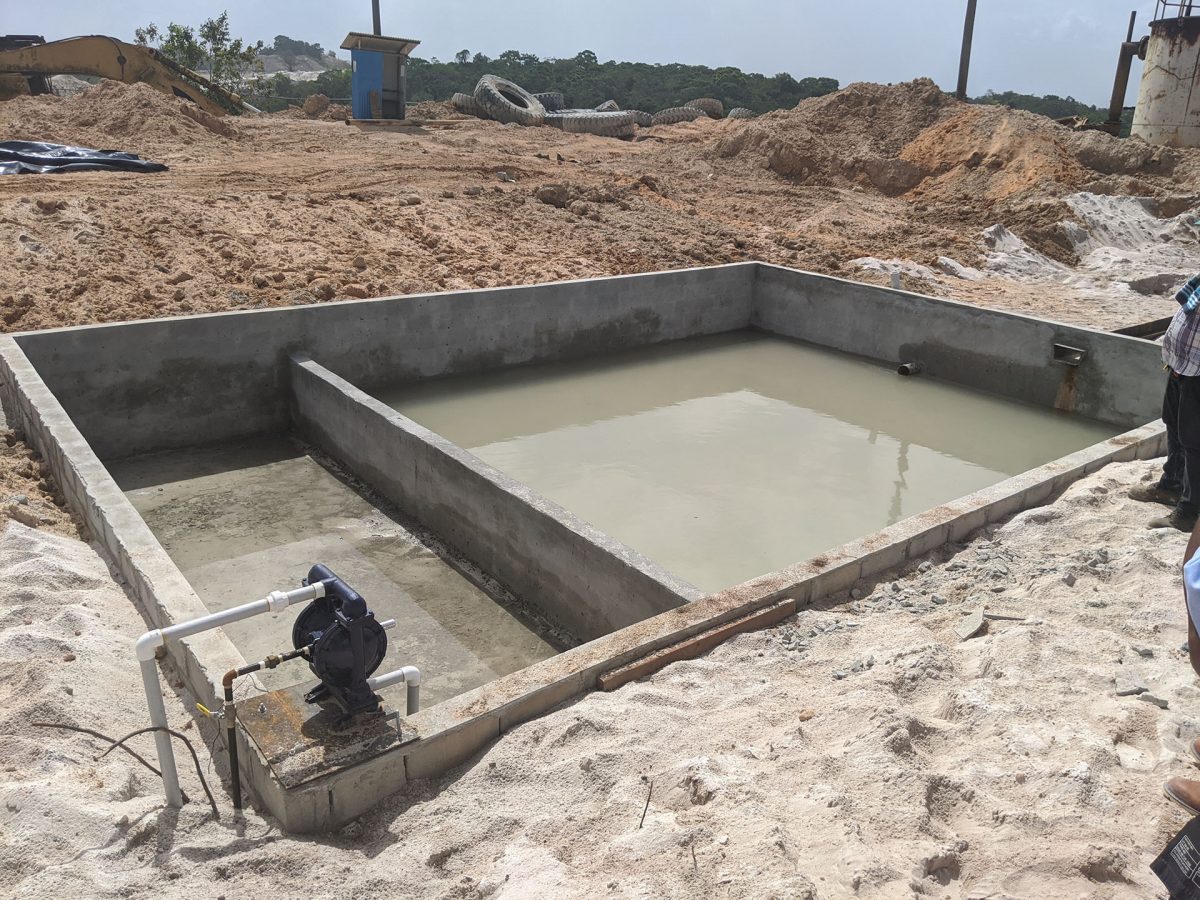Three weeks after a spill from bauxite miner Bosai’s tailings pond resulted in its operations at Linden being effectively halted, the Environmental Protection Agency (EPA) has granted approval for the company to recommence discharging slurry into its tailings pond after deficiencies were remedied.
EPA Executive Director Dr Vincent Adams told Stabroek News last week that the agency is satisfied with the US$10,000 in improvements Bosai made to this aspect of its operations over the past two weeks. He said the approval to recommence discharging slurry into the tailings pond will be granted.
The approval will allow Bosai to recommence the washing of bauxite, which was effectively stopped when the company was slapped with a cease order regarding the discharge of slurry into the pond. The company was also informed that it could not recommence that aspect of its operations until it satisfied the EPA that the tailings pond was environmentally sound.

As of Friday, Bosai’s operations were at a virtual standstill for approximately 21 days. It is uncertain when the company will actually recommence work. Adams said that the EPA wants additional improvements made to the bauxite company’s operations, but the agency is prepared to allow it to make these while its operations are ongoing.
The cease order was prompted by a breach in the pond which released slurry into the environment, flooding the yards of six residents of the Linden community of Noitgedacht. The breach occurred while Bosai workers were attempting to rectify an earlier irregularity. The company was fined approximately $1 million each for both issues.

On Wednesday, EPA Senior Environmental Officer Collis Primo led a team to the company’s operations to inspect the works which were undertaken to improve the pond as well as several aspects of the bauxite company’s operations.
“Based on what was observed from a previous visit [earlier this month], it is a 1,000 per cent improvement from what was seen. From that perspective, we are satisfied to a large extent with the work they have put in,” Primo said.
He also expressed approval that Bosai is taking action to prevent the leaching of waste oil from its operations into the environment, though he noted that the EPA will continue to press the company to implement more environmentally friendly approaches in its operations. Primo said that environmental auditors will visit the facilities at some point to ascertain how the environment is likely to be impacted by the actions taken by the Chinese company.

One of those operations is a workshop located deep in the company’s bauxite mines. Various works, including the maintenance of heavy-duty vehicles, takes place at this facility. As is typical in maintenance exercises, oil cylinders are changed and disposed of. The works also include the washing of vehicles.
Both activities produce ‘waste oil’. A Bosai engineer explained that oil, and even grease, is disposed of in what is referred to as an ‘oil disposal unit’. The residual oil from the cylinders would leak out of the cylinder and into the disposal unit, which was situated on the ground.
Stabroek News understands that the EPA was concerned that there was nothing between the unit and the ground, so that if the oil escaped, it could leach into the environment.
Further, during the washing of machines, whatever oil was washed off flowed directly into the environment.
Primo said that the EPA had taken note of these practices during a previous trip, and had asked Bosai to take corrective action, which it did.
Now, the container in which the old oil cylinders, grease, and other oily waste is stored for burning later, has been placed in a concrete catchment structure which was constructed for that purpose. Now, even if oil escapes the container, it will be captured by the catchment structure
Primo was concerned, however, that any oil which found its way into the catchment structure could still flow into the environment if it rained. The engineer in charge said that they are examining ways to address that possibility. As for the waste produced, the Bosai engineer proposed to burn the waste, and bury any metal or wire remains. A location near the site has already been proposed, which has to be approved by the EPA.
Primo said that the EPA has to deliberate on the disposal method proposed, including the site for the proposed furnace.
To prevent oil from the washing of machinery from flowing into the environment, Bosai has constructed an ‘oil-water separator’, which is a structure built into the ground to, as much as possible, separate the oil from the water, and then isolate that oil for burning in the company’s kiln.
The lead engineer for the maintenance operation explained that when a truck is washed, water mixed with oil flows into a structure constructed in the ground for the separation of water and oil. A concrete partition, which does not reach the top of the structure, divides it into two sections, one larger than the other. As the oily water flows into the larger section, it rises. As the oil is lighter than water, it floats on top of the water so that as it reaches the top of the partition, the oil, with some water, flows into the smaller section.
This combination of oil and water is then pumped from that smaller compartment to a smaller separator, where the residual water is further separated from the oil. The waste oil is then sent to a tank, from which it is transported to the kiln for burning. Meanwhile, the water is allowed to flow back into the environment.
Although Primo seemed generally happy with the progress, he gave recommendations for improvements based on his observations.
Bosai proposes to build a furnace in the location where the excavator currently is.
The lead engineer (in frame) explains that a smaller separator (the black machine in frame) further separates the oil from the water before they are disposed of in different ways.




